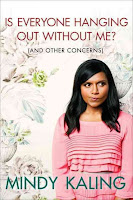I set out in 2011 to read the equivalent of one book a week, or 52 books total. I ended up with 79 titles on my list, with books for children, for young adults, and both adult fiction and nonfiction. I did not count picture books because, well, as a children's librarian, 52 picture books would present no challenge at all. Perhaps in 2012 I'll blog about my favorite picture books, too.
Here's how my reading broke down (yes, I really made a pie chart):
And, the real point of this posting, my ten best reads of 2011:
Best Children's Fiction, Fantasy: The Fairy-Tale Detectives by Michael Buckley
Best Children's Fiction, Historical: The Trouble with May Amelia by Jennifer L. Holm
Best Children's Fiction, Humorous: The Adventures of Sir Gawain the True by Gerald Morris
Best Children's Fiction, Realistic with a Female Protagonist: Faith, Hope, and Ivy June by Phyllis Reynolds Naylor
Best Children's Fiction, Realistic with a Male Protagonist: Heart of a Shepherd by Rosanne Parry
Best Young Adult Fiction: Before I Fall by Lauren Oliver
Best Young Adult Series Fiction: The Hunger Games by Suzanne Collins
Best Adult Fiction, Comedic: The Family Fang by Kevin Wilson
Best Adult Fiction, Dramatic: The Red Garden by Alice Hoffman
Best Adult Nonfiction: The Lost City of Z by David Grann
May the year 2012 bring you many wonderful opportunities for reading discoveries!








